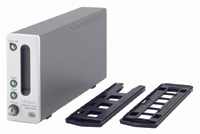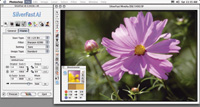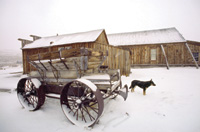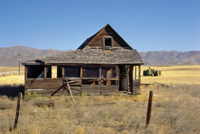The New Minolta DiMAGE Scan Elite 5400
Sometimes it is a good thing to be proven wrong, and to also be happy to admit it. For the last few years I have been using 4000dpi dedicated film scanners and was convinced that other than the ability to make larger prints there was little to be gained from any substantial boost in scanner resolution. After testing the new Minolta DiMAGE Scan Elite 5400 I am now convinced that there is a considerable image quality advantage derived from scanning at 5400dpi resolution. The resolution advantage of the Elite 5400 is backed up by two other primary performance factors--a color depth of 48 bits (16 bits per RGB channel) and a 4.8 dynamic range. The Elite 5400 also features Applied Science Fiction's (now a part of Kodak) Digital ICE dust and scratch removal system, which performs exceptionally well with this scanner. |
|||
The Elite 5400 has an all-metal
construction with very effectively designed film carriers in a configuration
that is entirely enclosed, including a dust exclusion door. The film plane
and sensor are also upright, further preventing any dust and dirt from
accumulating and affecting scan performance. The computer interface connection
provides both data transfer speed and the choice between USB 2.0 and FireWire.
All of these very positive attributes are also quite affordable. At around
$900, the new Minolta DiMAGE Scan Elite 5400 is very competitively priced
in the middle of the range of high-performance dedicated 35mm film scanners. |
|||
Driver Performance |
|||
Using The Minolta
DiMAGE Scan Elite 5400 |
|||
To be a bit more specific, what I was discovering was that the Minolta DiMAGE Scan Elite 5400 was capturing very minute details of image information at every level of density in the slides, even the very contrasty K-12 process Kodachome images I'd made in the 1960s. However, with these Kodachrome scans, as well as scans of silver-based black and white negatives, I had to turn off Digital ICE, and then used SRD in SilverFast to remove dust and scratches. Besides obtaining fully and acutely defined detail across the density scale, I was able to reproduce incredibly clean color. I could remove any color cast and restore and adjust colors and saturation to achieve excellent fidelity with the original. In fact, many of the scans produced results that looked like the original from 20, 30, and even 40 years ago. Evaluation And Recommendation |
|||
Technical Specifications |







































